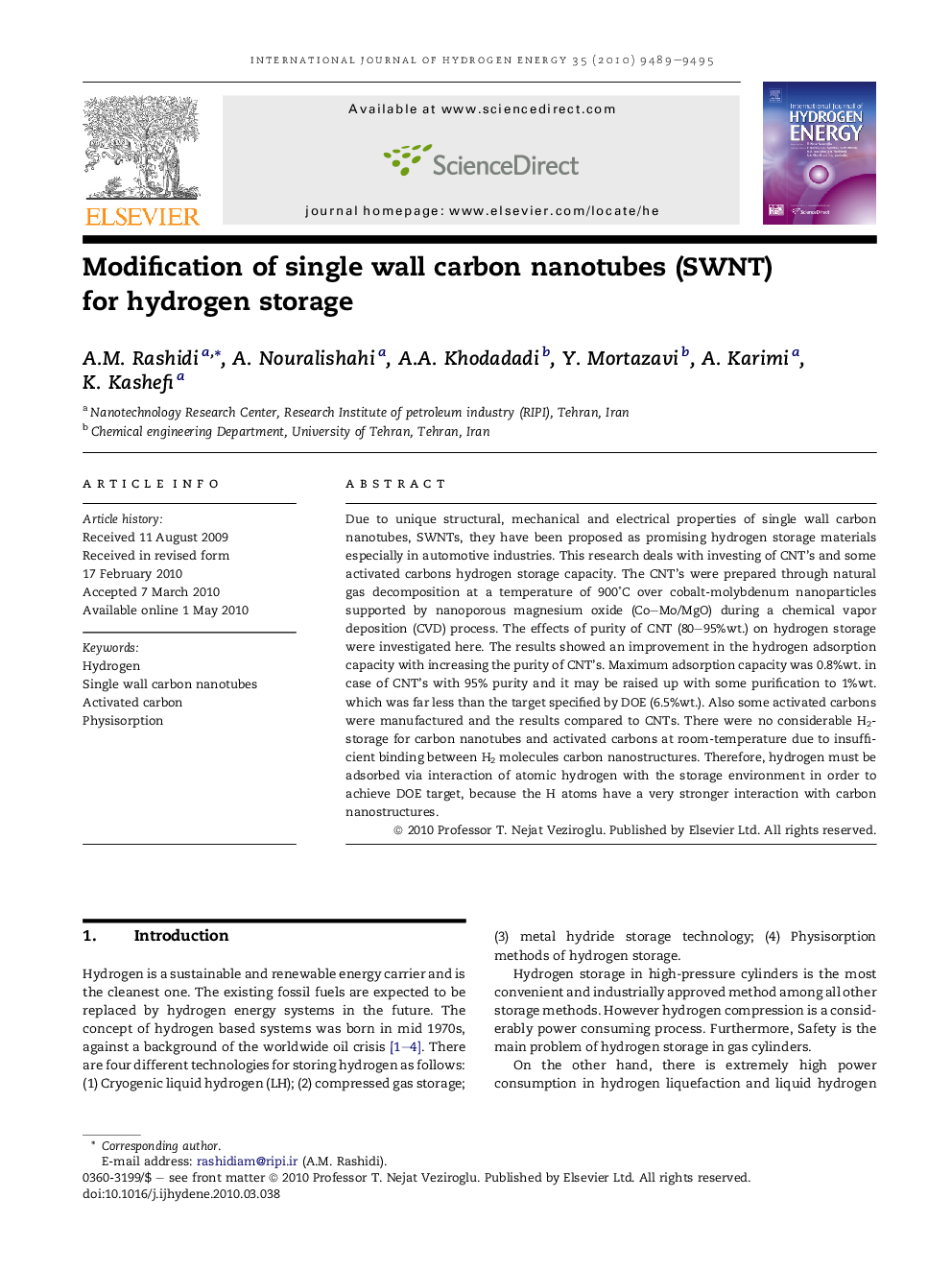| Article ID | Journal | Published Year | Pages | File Type |
|---|---|---|---|---|
| 1277009 | International Journal of Hydrogen Energy | 2010 | 7 Pages |
Due to unique structural, mechanical and electrical properties of single wall carbon nanotubes, SWNTs, they have been proposed as promising hydrogen storage materials especially in automotive industries. This research deals with investing of CNT’s and some activated carbons hydrogen storage capacity. The CNT’s were prepared through natural gas decomposition at a temperature of 900˚C over cobalt-molybdenum nanoparticles supported by nanoporous magnesium oxide (Co–Mo/MgO) during a chemical vapor deposition (CVD) process. The effects of purity of CNT (80–95%wt.) on hydrogen storage were investigated here. The results showed an improvement in the hydrogen adsorption capacity with increasing the purity of CNT’s. Maximum adsorption capacity was 0.8%wt. in case of CNT’s with 95% purity and it may be raised up with some purification to 1%wt. which was far less than the target specified by DOE (6.5%wt.). Also some activated carbons were manufactured and the results compared to CNTs. There were no considerable H2-storage for carbon nanotubes and activated carbons at room-temperature due to insufficient binding between H2 molecules carbon nanostructures. Therefore, hydrogen must be adsorbed via interaction of atomic hydrogen with the storage environment in order to achieve DOE target, because the H atoms have a very stronger interaction with carbon nanostructures.
